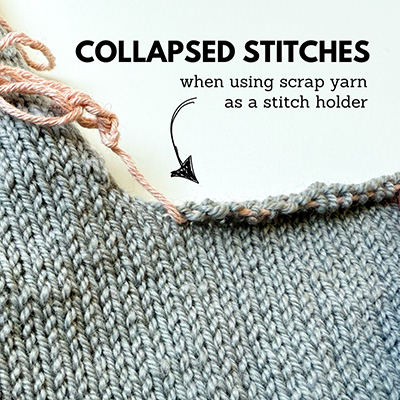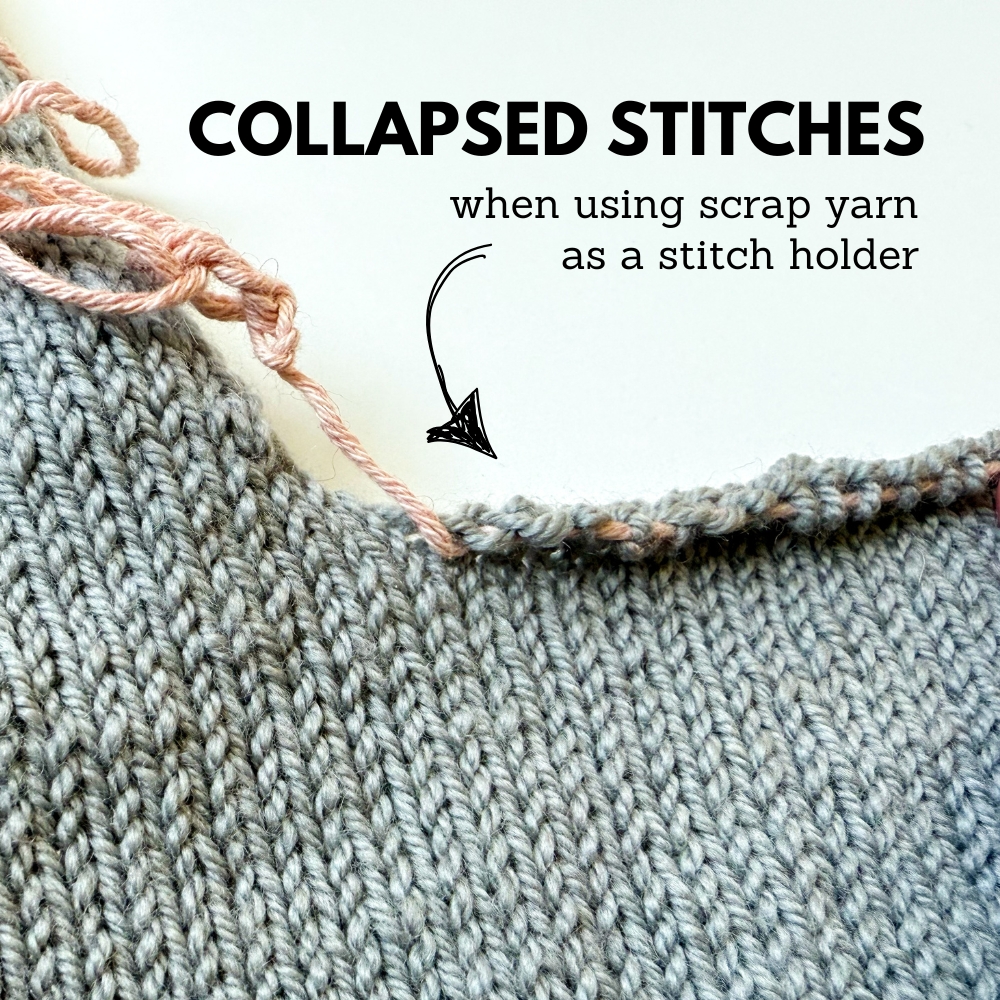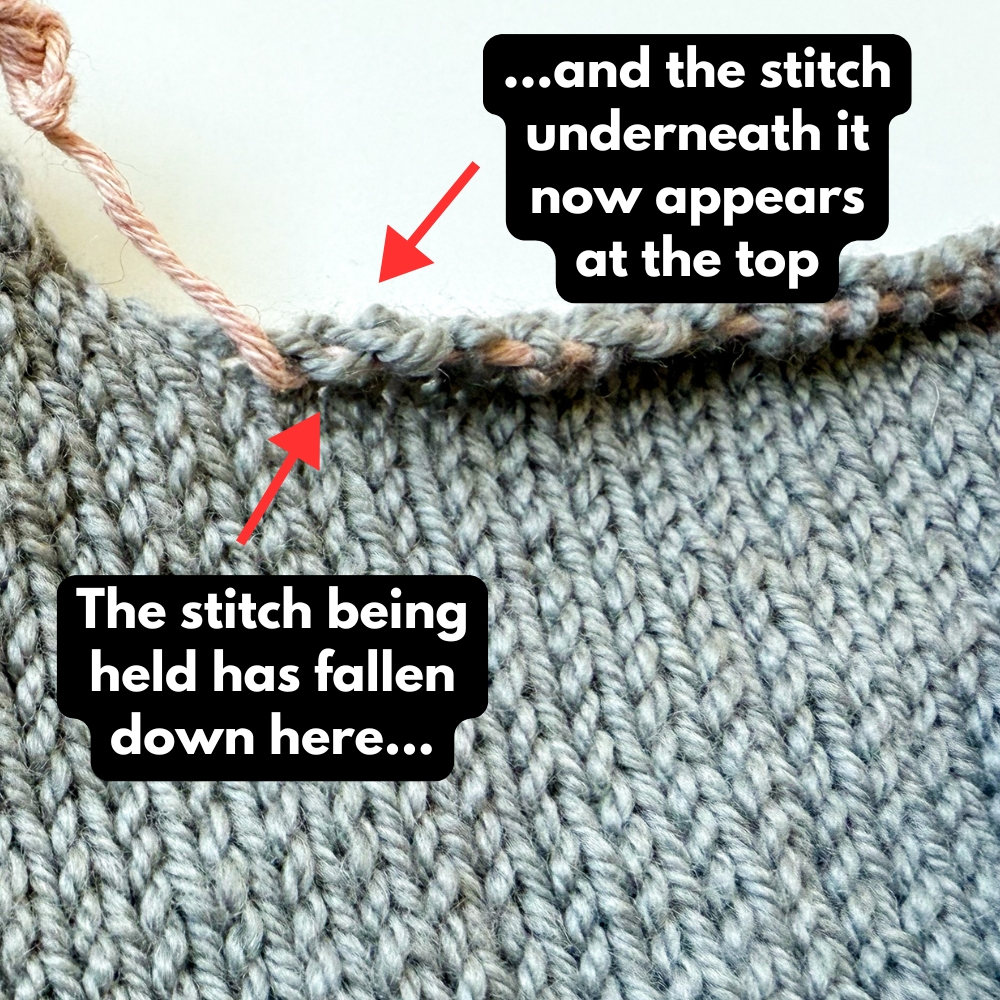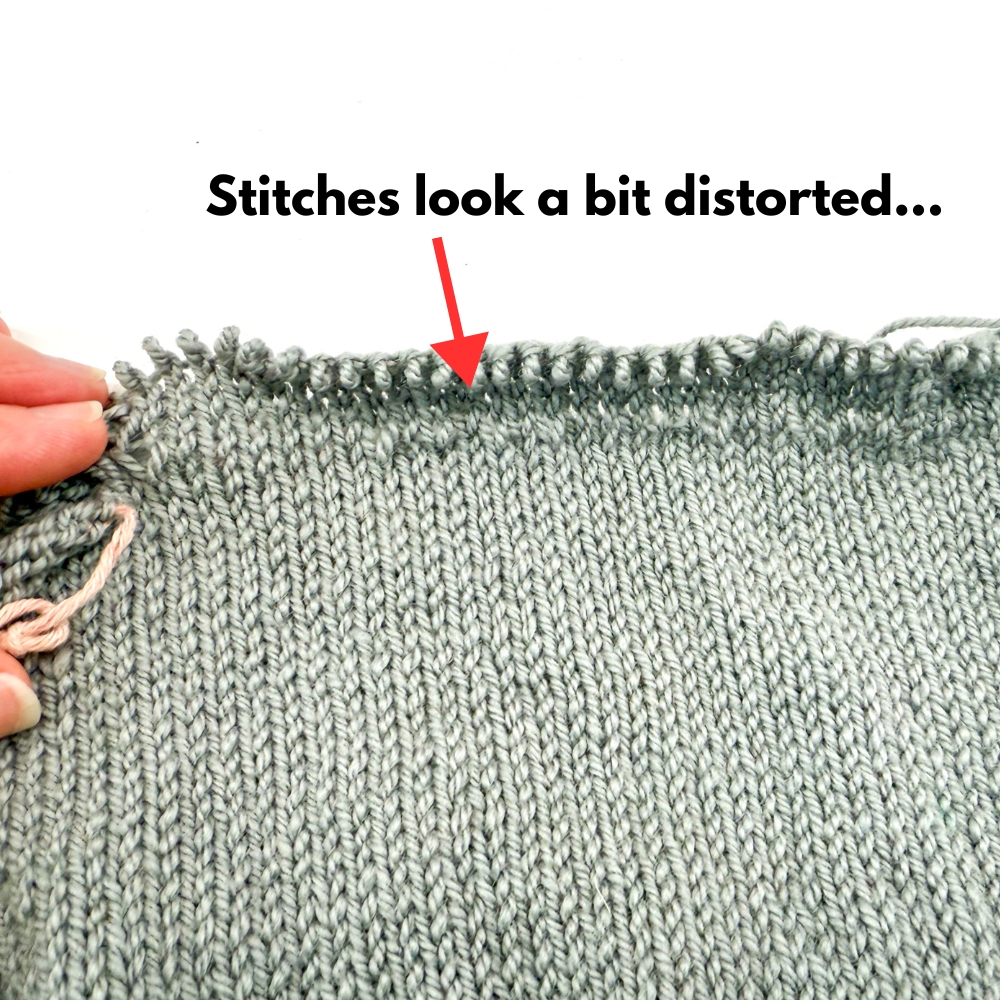The use of scrap yarn as a stitch holder is a very popular method used for when you need to hold a lot of stitches, so it’s often used in seamless knitting (which often requires holding lots of stitches at different points). It used to be my go-to method personally, until stitch holder cords came into the market (you can learn more about those here), but scrap yarn remains a popular choice for many knitters. But there is one aspect to using scrap yarn that is not often mentioned that all knitters should know about if you plan to ever use this method for holding stitches and that is this – collapsed stitches!
In this blog post I will talk about what a collapsed stitch is, why it occurs, how to avoid it and how to fix it should it happen to you!
What’s a collapsed stitch?
Sometimes stitches can collapse when being held on scrap yarn. This means that they fall under – they are still being held on the scrap yarn but since they have collapsed, the stitch underneath it is what appears on top. Below is a visual to explain this a bit better:
Personally I have found that stitch collapse in this scenario is most common when working with yarn that is on the thinner side (so fingering or sport-weight), or in fibers that are very silky and drapey.
Why does a collapsed stitch cause a problem?
The fact that the stitch collapses is not itself an issue (as the stitch is still being held). The problem occurs when you go to transfer these stitches back onto your knitting needle because you can easily accidentally transfer the stitch underneath the held stitc instead. And this in turn causes the stitches in the fabric to look distorted because you then have dropped stitches. This is what that can look like:
And the big giveaway that tells me that these are indeed dropped stitches and not just some gauge-related tension issue? Turn the work over and look at the wrong side – those elongated loops along the backside shows that these were dropped stitches.
How do you avoid this? Or how do you fix this if it’s already happened?
Whether you want to know how to avoid this from happening (should you ever use scrap yarn as your stitch holder), or if it’s already happened to you and you want to know how to fix it, I have you covered! Check out my video lesson below where I discuss all of this and demonstrate exactly how to go about fixing it.





